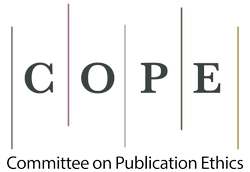Serum Levels of Interferon-gamma in Patients with Falciparum Malaria- Khartoum State- Sudan
Keywords:
P.falciparum, P.vivax, Giemsa, Immunochromatographic, IFN-γ; Khartoum StateAbstract
A complex parasite such as human Plasmodium is likely to generate a variety of substances that injure the hosts directly or cause immunopathology. In malaria, a blood concentration of anti-inflammatory cytokines, such as interferon-gamma (IFN-γ) is increased. The present study was performed to analyze IFN-γ levels inpatients with certain conditions of malaria with healthy controls and correlate with malaria density infection as well as age groups. It is a cross-sectional study was carried out in Khartoum State/ Sudan, a total of 49 febrile patients and 10 healthy volunteers as controls were included in this study. Blood samples were collected from both patients and control candidates in (EDTA) containers for parasitological and immunological tests. Microscopical examination of thick and thin blood films rather than immunochromatography test (ICT) were used to detect the positive samples for Plasmodia. Enzyme linked Immunosorbant Assay (ELISA) was used for the determination of IFN-γ levels. The results showed that the prevalence was occurred among all age groups and P.falciparum was the predominant species with P.vivax mono or co-infections. Furthermore IFN-γ levels in malaria patients were 65.14and SD 64.56 while the levels in healthy participants were 12.33 and SD was 4.11. The difference was found to be statistically significant (P= 0.001). The levels of cytokine mentioned above were observed to be raised in malaria individual compared to healthy control candidates.
References
Malaria: Disease Impacts and Long-Run Income Differences (PDF). Institute for the Study of Labor. http://ftp.iza.org/dp2997.pdf. Retrieved 2008- 12- 10.
Fong, Y. L., Cadigan, F. C. and Coatney, G. R. (1971). A presumptive case of naturally occurring Plasmodium knowlesi malaria in man in Malaysia. Transactions of the Royal Society of Tropical Medicine and Hygiene; 65(6): 839- 40.
doi:10.1016/0035-9203(71)90103-9.PMID 5003320.
Singh, B., Sung, L. K., Matusop, A., Radhakrishnan, A., Shamsul, S. S., Cox-Singh, J., Thomas, A. and Conway, D. J., 2004. A large focus of naturally acquired Plasmodium knowlesi infections in human beings. The Lancet; 363 (9414):1017- 1024. PMID 15051281. Available at
http://linkinghub.elsevier.com/retrieve/pii/S01406736041583 64.
Cox-Singh, J., Davis, T. M., Lee, K. S., Shamsul, S. S., Matusop, A., Ratnam, S., Rahman, H. A., Conway, D. J. and Singh, B. (2008). Plasmodium knowlesi malaria in humans is widely distributed and potentially life threatening. Clinical infectious diseases; 46(2):165- 171.
Phillips, R. S. (2001). Current Status of Malaria and Potential for Control. Clinical Microbiology Reviews; 14 (1): 208-226.
World health organization (WHO). Sudan Malaria control andelimination.2015. Available at
http://www.emro.who.int/sdn/programmes/malaria-
sudan.html
Douglas, J., Perkins, T., Gregory, C., Davenport, P. K., James, B. H., and John, M. O. (2011). Severe Malarial Anemia: Innate Immunity and Pathogenesis. International Journal of Biological Sciences; 7(9):1427- 1442.





























